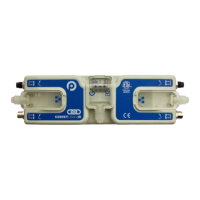APPENDIX D – UNDERSTANDING IP ADDRESSES AND SUBNETS
CONVEYLINX, IP ADDRESSES, AND SUBNETS
In order to connect to a ConveyLinx network and/or utilize and manage a multiple subnet ConveyLinx conveyor
installation; a certain level of Ethernet I.P. addressing knowledge is required. This reference provides some
background information and a quick guide for setting up your PC to be able to take full advantage of ConveyLinx
and EasyRoll.
Your PC’s I.P. address is used by an Ethernet network to identify the PC on a network. An I.P. address is
constructed of 4 numbers or octets. Each of the numbers can be a value from 0 to 255. The format of an I.P.
address is:
AAA.BBB.CCC.DDD
Where AAA, BBB, CCC, and DDD can theoretically be any values from 0 to 255 each. For any given network, this I.P.
address is unique for each PC on the network. The AAA value identifies the Class of the network and is most
relevant to I.T. professionals and other entities such as internet providers, etc. For our purposes, we will use a
Class C type network which uses the value 192 for AAA. For the BBB value we will use 168. The 192.168 value for
the first 2 octets of our I.P. address is the most common for user configurable networks. The values AAA.BBB.CCC
together identify the Subnet that the PC will be connected. The Subnet can be thought of as a group of PC’s or
ConveyLinx modules that can all communicate directly with each other. For example, if a PC’s I.P. Subnet
(AAA.BBB.CCC) address is 192.168.0; then any other PC or device on the same network who’s Subnet is equal to
192.168.0 can communicate with each other. In this case, our network can have up to 256 devices because the
DDD octet has to be in the range of 0 to 255 and each complete I.P. address has to be unique. Any other PC’s or
ConveyLinx modules on our network who’s Subnet does not equal 192.168.0 will not be able to communicate with
each other.
In order to allow your PC to communicate with more than 256 possible address on its network; your PC’s I.P.
address configuration also uses another 4 octet value known as the Subnet Mask. This value allows your PC to see
other Subnets on the same network.
The following figure shows some typical values for Subnet Mask and the resulting number of Subnets that can be
addressed:

